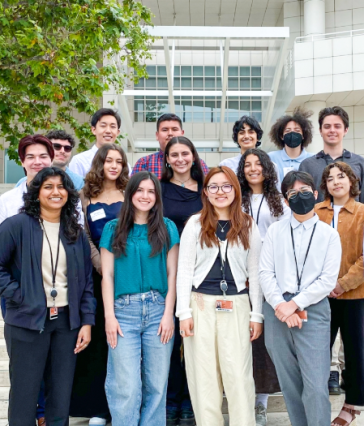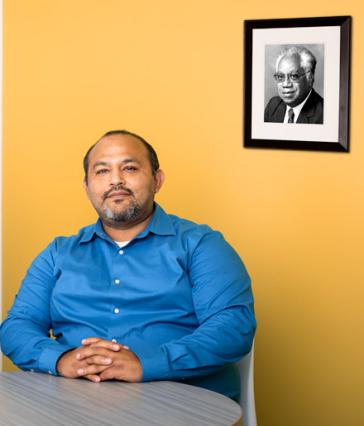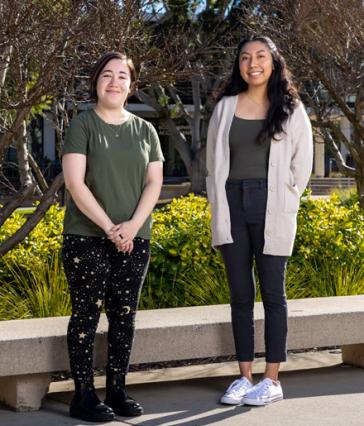CSULB introduces Elbee with sunflower to shed light on non-apparent disabilities
Upon first glance, not all disabilities are apparent. Without familiar symbols, such as the disabled car placards, white canes or wheelchairs, it can be difficult to recognize the challenges those with non-apparent disabilities face daily.
To promote awareness of disabilities that are non-apparent, Cal State Long Beach has adopted the use of the Hidden Disabilities Sunflower symbol that allows campus individuals to voluntarily share that they have a disability or condition that might not be apparent.
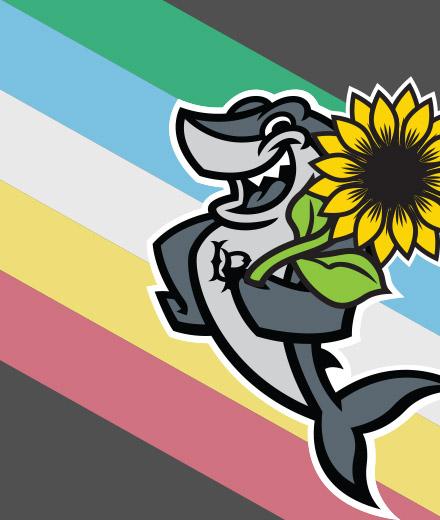
In conjunction with this Disabilities Pride Month in July, The Beach is unveiling Elbee with the Non-Apparent Disabilities Sunflower that will let faculty, staff and students know that the individual could have a disability and would benefit from understanding, inclusivity and support.
Some ways to show inclusivity can be hearing what the individual may need in the moment, such as embracing their different abilities and providing them with a safe space to have more time.
During Disability Pride Month, and into the first few weeks of the semester, the University Bookstore will be adding the sunflower to Elbee merchandise for faculty, staff and students who wish to represent non-apparent disabilities or to stand in solidarity as an Ability Ally.
Mary Nguyen, director of the Bob Murphy Access Center, said she hopes that introducing Elbee and the sunflower will be “a positive way for our students to share with others that they may have a non-apparent disability and create the space for having conversations about how they can be best supported.”
For example, a student might inform their faculty and peers that they have a non-apparent disability and thrive best when they can audio record to allow them to replay and review class discussions in their own environment and at their own pace, she added.
Providing a barrier-free university experience is at the heart of the Bob Murphy Access Center (BMAC). More than 12,500 students with disabilities have benefited from BMAC’s services, empowering them to build lives of purpose on the path of their choosing, one of the priorities of CSULB’s No Barriers comprehensive fundraising campaign.
Donor Sumer Temple said the BMAC offers more than just services for students, faculty and parents of students with disabilities.
"I feel like it is a place that offers hope for parents, like myself, that kids can have a future," said Temple, the mother of a 10-year-old son with autism.
"They deal with so much there; it's amazing. And for varying disabilities – deaf, blind, neurodivergent, physical disabilities. They really try to help all students. And like I said, what they do for the faculty, who are not trained or equipped for this."
Here are some facts about Non-Apparent Disabilities:
A global matter
More than 1.3 billion people globally and 1 in 4 Americans, live with a disability. Some non-apparent disabilities can be respiratory as well as chronic conditions such as arthritis and diabetes. Dyslexia and ADHD are other non-apparent disabilities.
More than you know
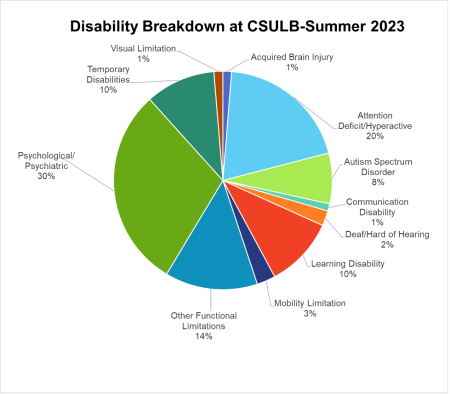
According to the National Center for Education Statistics, the number of students ages 3–21 who received special education and/or related services under the Individuals with Disabilities Education Act (IDEA) in 2021 was 7.3 million, or the equivalent of 15% of public-school students. The most common category of disability was specific learning disabilities (32%). At CSULB, the highest percentage of disability category is that of psychological/psychiatric disabilities.
Sight unseen
Many disabilities are neurological in nature, such as autism and ADHD, mental illness or other conditions that are not obvious. Some disabilities are more subtle. The Non-Apparent Disabilities Sunflower is designed to reduce stigma and help others understand when someone may have an invisible disability.
Uniquely different
There are many individuals who may identify with having the same disability diagnosis. It can be easy to assume that they all experience the same challenges. It is important to recognize that every person is uniquely different – what may be one person’s experience of disability may differ from another person’s experience. This is because disability can be understood as being on a spectrum from being mild to severe.
Masking their disability
Often people with autism use rocking, hand flapping or repetitive vocalizations to help express their emotions or calm themselves. Many people with autism are encouraged to actively suppress these behaviors, to act more “neuro typical.” This is called masking. Masking is a way people with autism can hide their autism. However, masking can be exhausting and draining for a person with autism, making social interactions more difficult.
Extra help
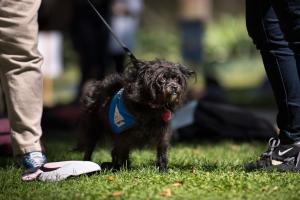
Service dogs are perhaps best known for their role as guide dogs for individuals that are blind or visually impaired, but they also are trained to assist people with diabetes in detecting high and low blood sugar spikes; these dogs are highly trained. Additionally, emotional support animals can be a treatment option for individuals with mental health challenges.
I didn’t mean to say that…
Using the right language when talking to disabled people is important. They prefer the phrase “disabled person” or “person with a disability.” The use of the word “handicapped” is no longer appropriate because it stems from a time when people with disabilities were marginalized and not integrated into society. Using “person with a disability” references the inspiring work done during the disability civil rights and social justice movement and it allows us to recognize people first while also embracing their different abilities. Some new terms that are popular in referring to people with disabilities include differently abled, diversability and people of determination.
Famous people who have embraced their disability identity
Many famous individuals are living with non-apparent disabilities. Did you know that Selena Gomez has lupus, Demi Lovato is bipolar, or Lady Gaga has fibromyalgia, a chronic illness that causes pain all over the body? Also, singer Nick Jonas was diagnosed at age 13 with Type 1 diabetes, rapper Lil Wayne lives with epilepsy and Gov. Gavin Newsom has dyslexia.











